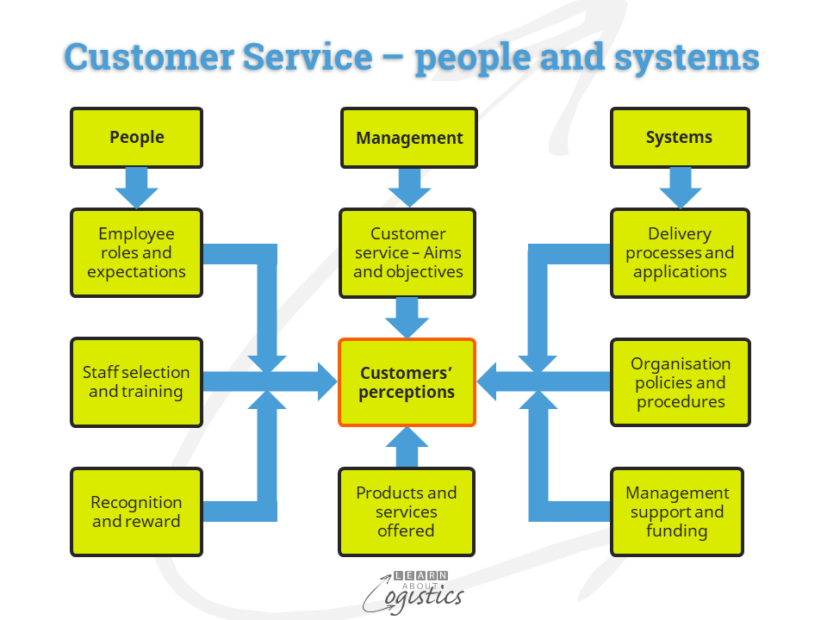Customer Service experiences
The traditional customer service statement continues to be true: ‘customers tell 5 people when they experience good customer service and tell 13 people when customer service is bad’.
A move to new premises is a project, with firm dates allocated to multiple businesses, so customer service is critical. The recent move to new premises by Learn About Logistics highlighted real bad experiences in Australia, which cannot be an exception.
- A large telecom company: Onsite installation of telecoms was booked 30 days in advance and a job number allocated. However, a technician did not appear on the required day (or any other day). The telco relies on ‘artificial intelligence’ (AI) for contacts with customers, but there was no contact or apology from the company. A week later, their system generated a ‘how was our service’ message and received an honest reply, to which no response was given. The customer had to contact the telco complaints number (which is not publicly available), to ensure that the charge for the non-performance job was removed.
- Kitchen appliances from two multinational ‘brand name’ manufacturers. A statement on each receipt noted two days for delivery:
- Company A: the order was’ lost’ for a week, but no contact was made with the customer. When finally contacted by the customer, there was evidently no liaison between sales, accounts and delivery – each blamed the others for the ‘loss’
- Company B: the order was not delivered for 11 days. Delivery is contracted out to a 3rd party courier company. The delivery address is not in number sequence with its neighbours, therefore route planners made an assumption that the address was incorrect, but made no effort to check, or even look on Google Earth to identify the premises! Following daily telephone calls by the customer, the goods were finally loaded for delivery onto a large truck; this resulted in the driver not getting out of his cabs to investigate the address, which is not obvious. He drove on and did not contact the customer. Further calls by the customer to describe in detail how to locate the address finally resulted in a delivery.
Throughout these experiences, all shippers and delivery companies did not contact the customer at any time to confirm the delivery address. At each company there was not an escalation process for situations where the promoted delivery period from order was not achieved. Of even more concern, no responsibility was taken by an individual – ‘we apologise for the delay’ does nothing about taking responsibility for contacting the customer and fixing the problem.
Web sites and AI used for customer service purposes are designed by people that import their own biases. For example on the websites used in these experiences, there was an assumption by analysts and programmers that the number for a property will only contain a numeric – no possibility that a property number may contain an alpha e.g. 10A. Also, the required delivery address field had no additional space for customers to provide delivery instructions for drivers.
Interacting with customers
The three companies spend a lot of money on advertising and promotion to gain customers, yet they allow customer service to be a cost centre with minimum expenditure and so loose customers. Until management attitudes about the value of supply chains change, expenditure on web sites, social media, big data analysis and AI is wasted.
The situations experienced by Learn About Logistics concern the ‘moment of truth’ when customers and potential customers have physical or virtual contact with front-line personnel. Each ‘moment’ lasts a short amount of time, but this is when the perception of the business is formed and decisions made whether to undertake or continue business with the company.
Does your organisation know how many ‘moments of truth’ they experience in a year and what are the outcomes? These are the relationships with customers and consumers who pay the company’s accounts, including your salary!
The kitchen appliance companies emphasised speed of delivery (within two days) on the receipt, but no actual delivery date and time was identified, so their emphasis was wasted. But how important is speed of delivery? Articles written by US based authors regularly emphasise the ‘Amazon effect’ where ‘quicker is better’; but this may not be true in other countries.
A recent study, sponsored by the software company Manhattan Associates, concerned the importance in Australia of delivery time for retailers and consumers. The response was illuminating – retailers considered that speed was very important, but consumers are not concerned about ‘fast’ delivery. Instead, they want an honest and accurate delivery date (with preferably a time allocation). If there is a change, they want to be informed, with a new and confirmed delivery date and time.
| Retailers understanding | Consumers preference |
| ‘Click and Collect’ in 2+ working days = 50% of respondents | 6 per cent of consumers consider this is the most useful delivery option |
| Same day home delivery is the most common delivery choice with customers = 31% of respondents | 8 per cent of consumers consider this is the most useful delivery option |
This illustrates that using the US as a template for decisions about how an organisation’s global supply chains should perform can be dangerous. Logistics managers responsible for a country or region should identify for each country, the customer and consumer needs and expectations for the company’s type of product. Do not rely on imported perceptions of ‘best practice’.
Customer Service model
Customers’ perceptions of a business are guided by three factors which drive effective Customer Service in your organisation: management, people and systems. The diagram below illustrates that management’s role is to state the customer service aims and objectives, with responsibilities.

The people factor affects those who have interactions with customers and/or consumers and contains three aspects: roles and performance expectations as set by management; the capabilities and training expected of staff members and how customer service staff will be recognised and rewarded.
The systems factor covers the customer service delivery processes, including IT and communication systems; the policies and procedures that support customer service people and the budget allocation.
Articles are published regularly that talk about the wonders of on-line ordering and delivery to the customer’s premises, plus the technologies that make it happen. Yet there are few articles that talk about the failures of customer service in the real world and how even large companies appear to be incapable of improvement in 2020.

